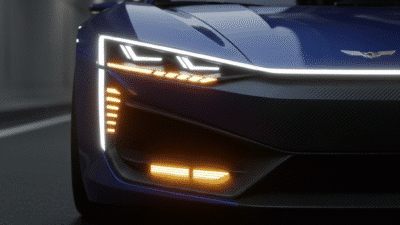Ever wondered who sculpts the dreams we drive? While we often laud car manufacturers for their engineering prowess and marketing savvy, the true artists, the visionary minds who lay down the initial lines, often remain in the shadows. These are the car designers, the unsung heroes who transform abstract ideas into tangible, beautiful, and sometimes revolutionary machines. They’re the ones who decide whether a car looks sleek and aggressive, elegant and understated, or quirky and fun. Without their genius, our roads would be filled with bland, soulless boxes.
Automotive design is a fascinating blend of art, engineering, and psychology. A designer doesn’t just draw pretty pictures; they consider aerodynamics, safety regulations, manufacturing capabilities, brand identity, and even the emotional connection a driver will have with their vehicle. It’s a high-stakes game where one stroke of genius can launch a legend, and one misstep can sink a brand. From the sweeping curves of a classic sports car to the futuristic angles of a hypercar, every detail is meticulously crafted. It’s an intricate process, often beginning with simple car design drawing concepts before evolving into a physical masterpiece. Let’s peel back the curtain and celebrate seven legendary car designers who didn’t just design cars, they defined eras and shaped the very culture of driving.
1. Ferdinand Porsche: The Father of Functional Iconography
When you talk about automotive legends, Ferdinand Porsche’s name often comes up not just as a brilliant engineer, but as a groundbreaking designer whose philosophy prioritized function and accessibility, leading to some of the most enduring shapes in history. Born in 1875 in what is now the Czech Republic, Porsche was an engineering prodigy from an early age, but his impact on design is undeniable, particularly with his most famous creation.
The People’s Car
Porsche’s most iconic design contribution is, without a doubt, the Volkswagen Beetle. Commissioned by Adolf Hitler in the 1930s to create a “people’s car” (Volkswagen), Porsche developed a vehicle that was affordable, reliable, and incredibly simple. The Beetle’s distinctive, rounded, beetle-like shape wasn’t just aesthetic; it was inherently functional. Its aerodynamic curves reduced drag, while its compact dimensions made it easy to maneuver and park. The rear-mounted, air-cooled engine allowed for a flat floor and maximized interior space, a revolutionary concept for the time. This wasn’t just a car; it was a societal statement, a testament to practical, accessible design that brought mobility to the masses.
Engineering as Design
Porsche’s design philosophy was deeply rooted in engineering. He believed that form should always follow function, a principle evident in everything from the Beetle to the early Porsche sports cars. His designs were often elegant in their simplicity, free from unnecessary ornamentation. The Porsche 356, the first production car to bear the Porsche name, perfectly embodied this ethos. Its sleek, aerodynamic body was a direct result of engineering requirements for speed and efficiency, yet it possessed an undeniable beauty that has transcended generations.
Lasting Legacy
Ferdinand Porsche’s influence extends far beyond the cars he personally designed. He established a design philosophy that continues to define the Porsche brand: high-performance vehicles that are not only fast but also exceptionally well-engineered and aesthetically coherent. His work laid the groundwork for future generations of designers who understood that true design genius marries innovative engineering with captivating visual appeal. Even today, the spirit of his functional approach influences how designers integrate car gadgets and accessories into a cohesive vehicle interior.
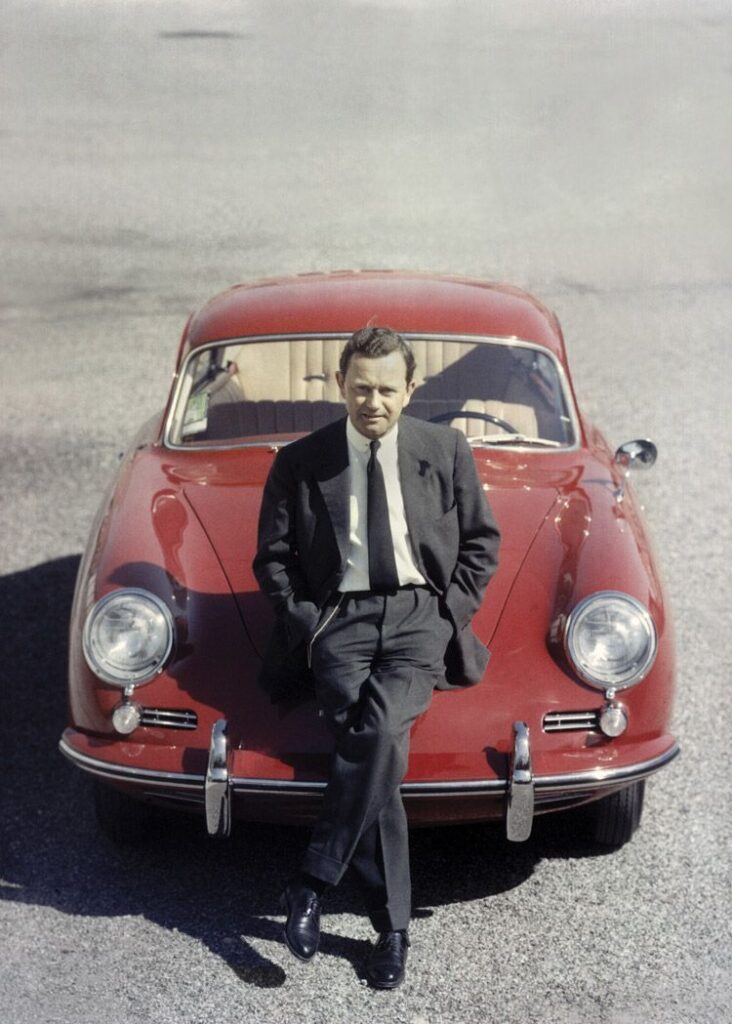
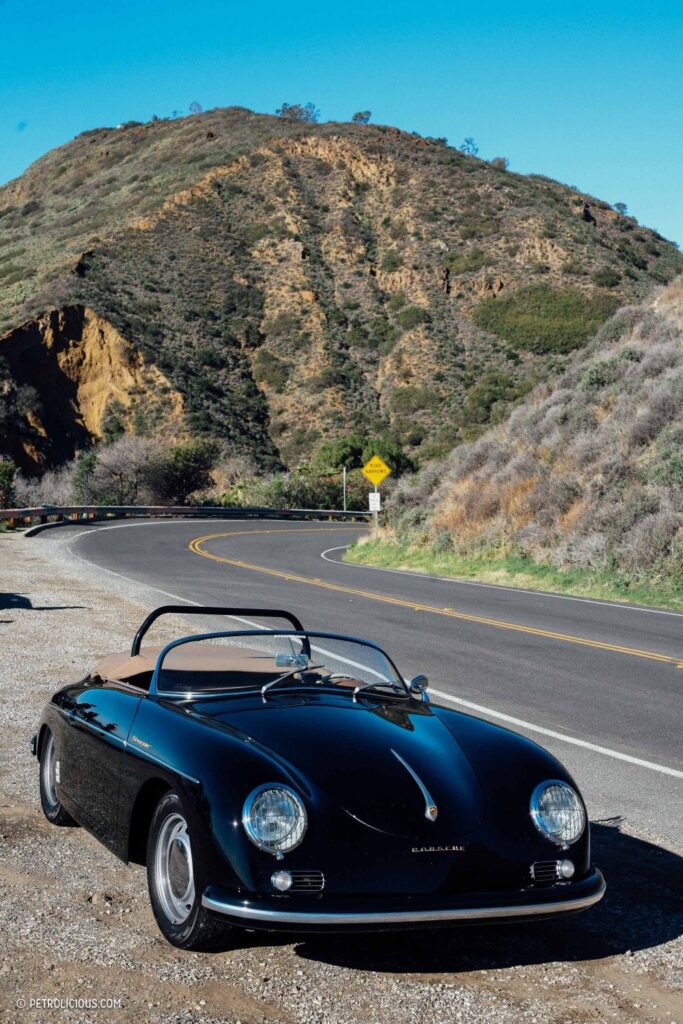
2. Harley Earl: The Master of American Automotive Glamour
Step into a time machine and head back to mid-20th century America, and you’ll find Harley Earl reigning supreme as the automotive industry’s first true design titan. As General Motors’ first head of design, he didn’t just style cars; he invented the very concept of automotive styling as a distinct profession. Earl transformed car design from an engineering afterthought into a powerful tool for marketing and desire.
The Birth of Automotive Styling
Before Earl, cars were primarily designed by engineers, leading to often utilitarian and boxy shapes. Earl, a former custom coachbuilder from Hollywood, brought an entirely new perspective to GM in 1927. He understood that consumers bought cars not just for transportation, but for aspiration and emotion. He created the “Art and Colour Section” (later renamed the Styling Section), a revolutionary concept that put designers at the forefront of vehicle development. He professionalized the process, employing artists, sculptors, and industrial designers, giving them unprecedented influence over a car’s final look.
Fins, Chrome, and Concept Cars
Earl’s era at GM, spanning over three decades, was defined by an explosion of style, often characterized by flamboyant use of chrome, two-tone paint schemes, and, most famously, tailfins. Inspired by fighter planes, he introduced tailfins on the 1948 Cadillac, sparking a trend that swept the American automotive industry for over a decade. He understood that bigger and bolder often translated to more desirable in the post-war boom.
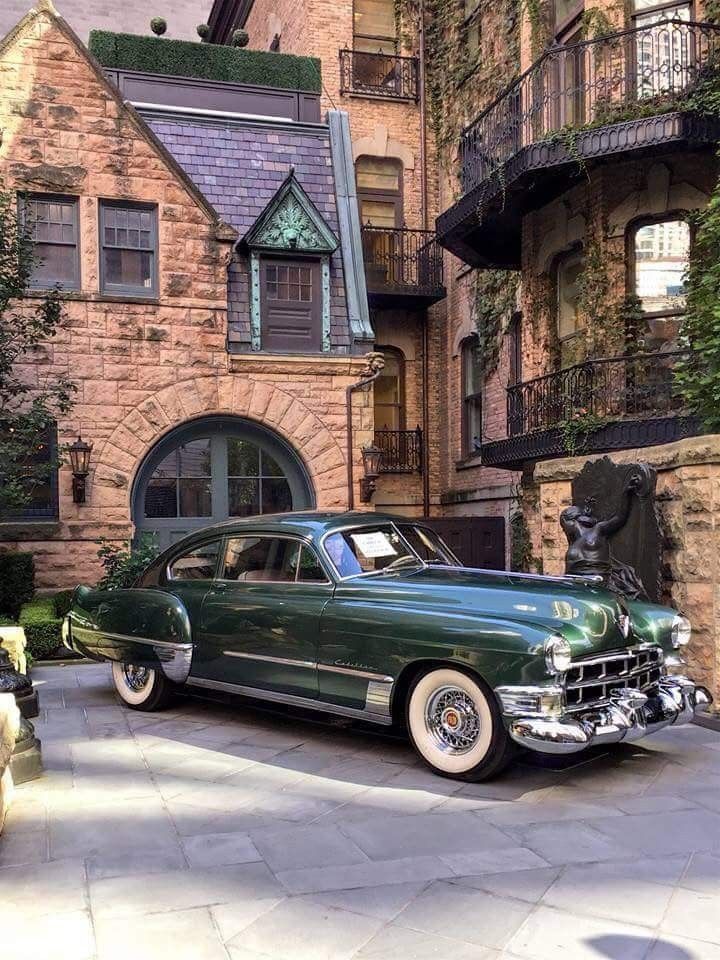
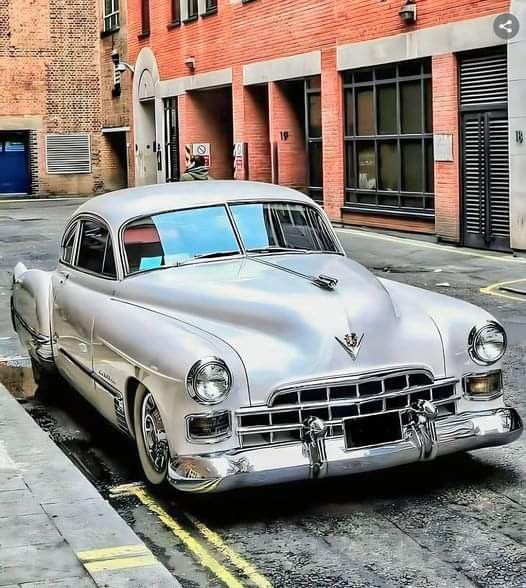
Perhaps his most enduring legacy, however, is the concept car. Earl pioneered the use of “dream cars” or concept vehicles, like the revolutionary 1938 Buick Y-Job (often considered the first concept car) and the series of GM Motorama show cars. These vehicles weren’t meant for production but served as rolling laboratories for new ideas, gauges for public reaction, and powerful marketing tools that built excitement for future models. They allowed designers to push boundaries and explore possibilities without immediate production constraints, much like architectural innovators like Zaha Hadid redefined urban landscapes.
An Enduring Influence
Harley Earl’s impact cannot be overstated. He elevated car design to an art form and a critical business function. His emphasis on annual model changes, styling updates, and the creation of aspirational vehicles became the blueprint for the entire auto industry. He taught the world that cars could be more than just machines; they could be expressions of personality, status, and dreams.
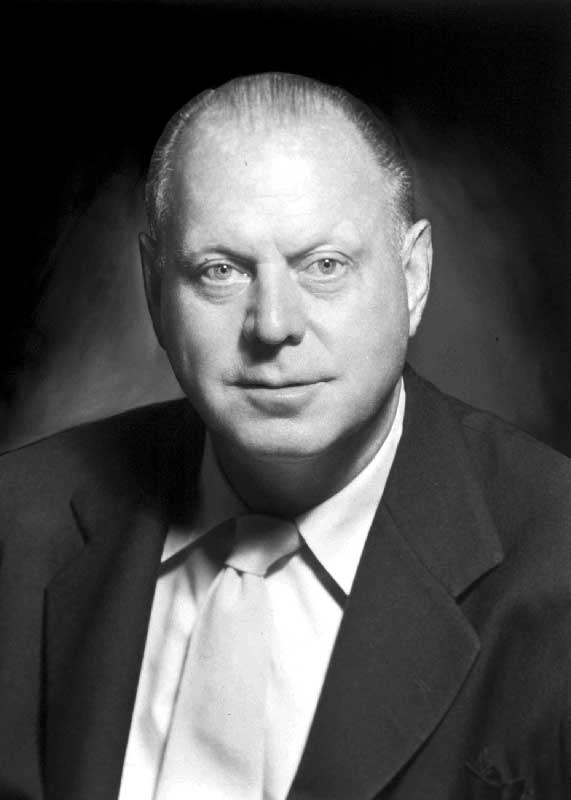
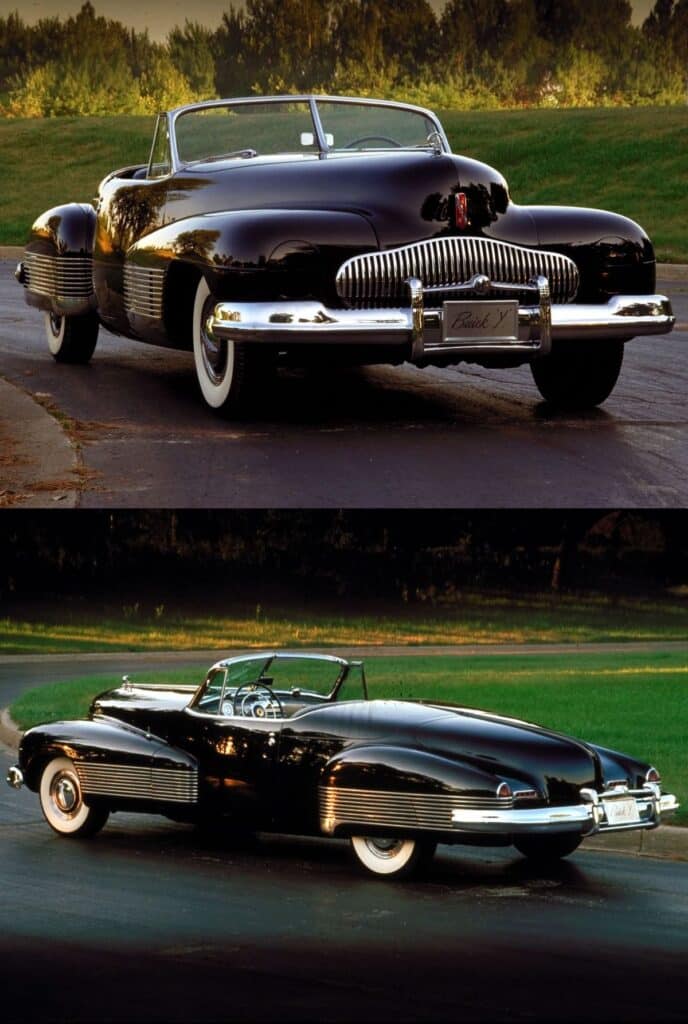
3. Battista “Pinin” Farina: The Maestro of Italian Elegance
When you hear “Ferrari,” “Maserati,” or “Alfa Romeo,” a certain image of flowing lines and undeniable grace probably comes to mind. That image was largely crafted by Battista “Pinin” Farina, the founder of the legendary Italian design house Pininfarina. Born in 1893, Pinin (a nickname meaning “the smallest” in Piedmontese dialect) started his own coachbuilding firm in 1930, quickly establishing himself as a master of exquisite, harmonious design.
The Art of Proportion
Pininfarina’s philosophy, deeply ingrained by Battista, centered on the art of proportion. His designs weren’t just beautiful; they were perfectly balanced, with every line and curve contributing to an overall sense of elegance and dynamism. He believed in a “design by subtraction” approach, removing anything that didn’t enhance the car’s inherent beauty or function. This minimalist yet impactful strategy has since inspired many other designers, including design icons like Christian Dior who revolutionized fashion with their elegant simplicity.
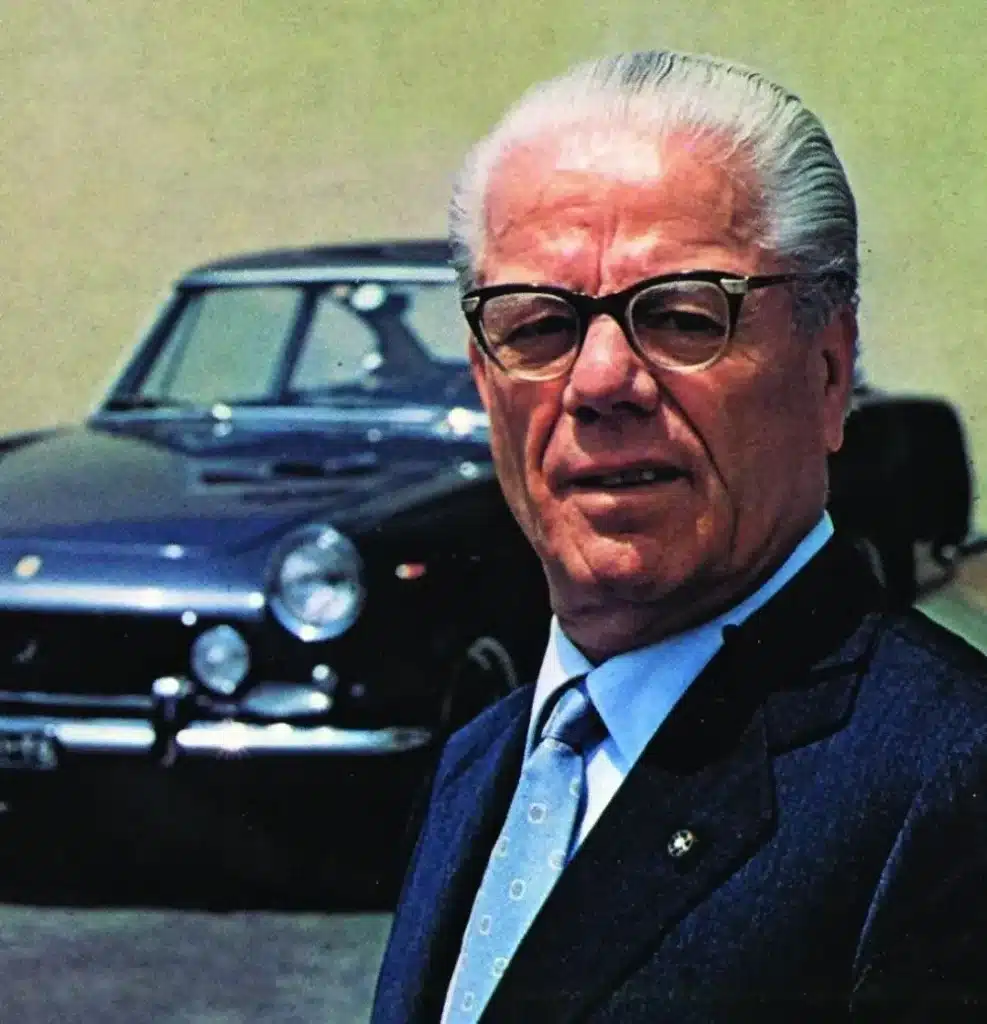
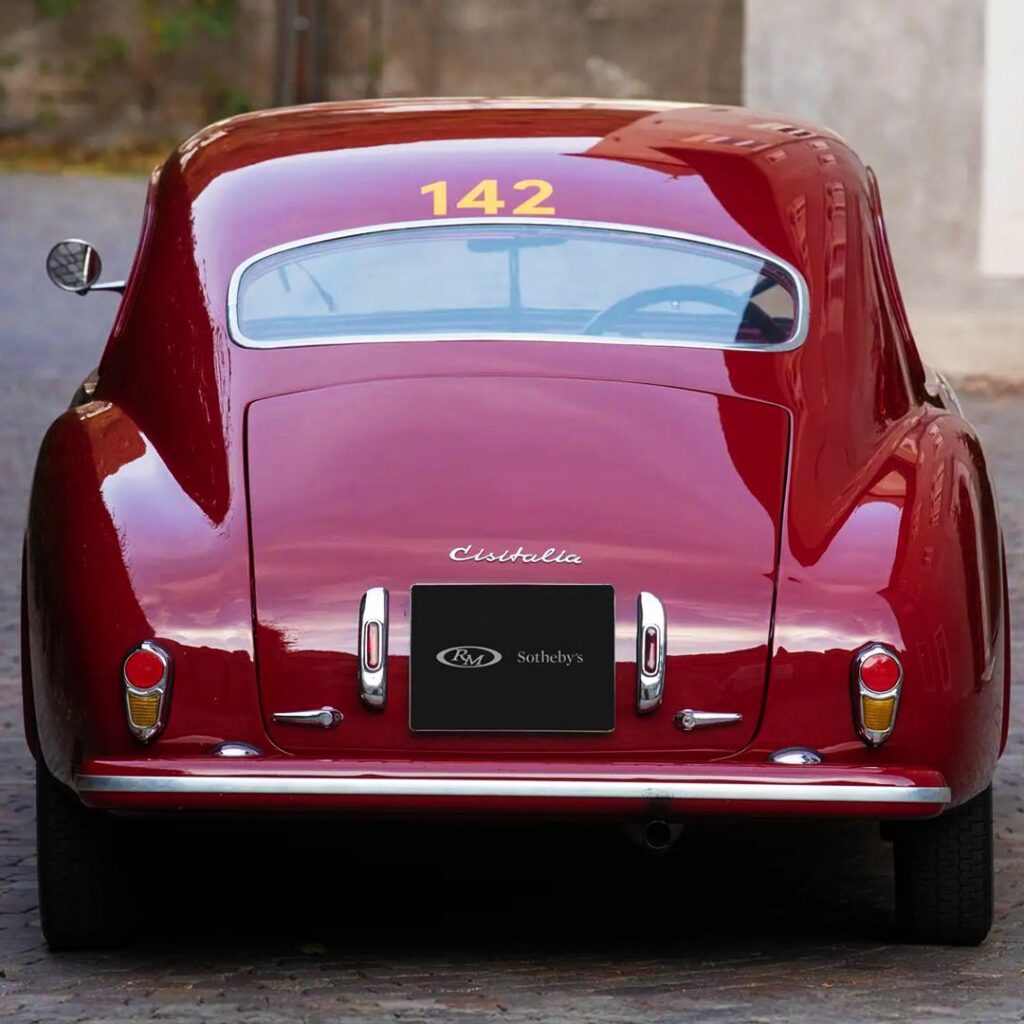
Defining Ferrari
While Pininfarina designed for many illustrious brands, its most famous and enduring collaboration was with Ferrari. Beginning in the early 1950s, this partnership blossomed into one of the most iconic in automotive history. Battista Farina himself met Enzo Ferrari in a restaurant (refusing to travel to Maranello or have Ferrari come to Turin), forging a bond that would define the look of Maranello’s road cars for decades.
From the exquisite 250 GT SWB to the groundbreaking Dino 206/246, the designs emanating from Pininfarina were characterized by their sensual curves, aggressive stances, and timeless beauty. They weren’t just fast cars; they were rolling sculptures, masterpieces of design that captivated hearts and minds globally. The 1947 Cisitalia 202 is often cited as one of the most beautiful cars ever made, a testament to Battista’s early genius, being so influential it was displayed in New York’s Museum of Modern Art.
A Lasting Legacy of Style
Battista Farina’s legacy is the enduring notion that a car can be a work of art. Pininfarina, under his guidance and later that of his son Sergio, became synonymous with Italian automotive elegance, influencing countless designers and setting benchmarks for luxury and performance vehicle aesthetics. Even after his passing, the company continued to produce iconic designs, a testament to the powerful foundation Battista laid. His work reminds us that true elegance is timeless and universally appreciated.
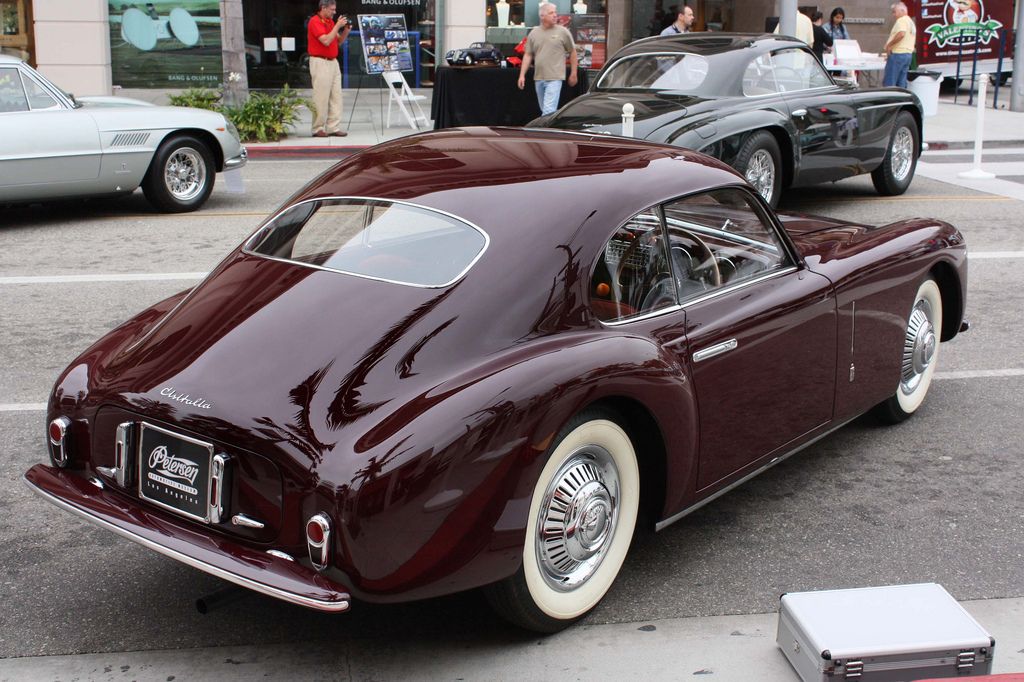
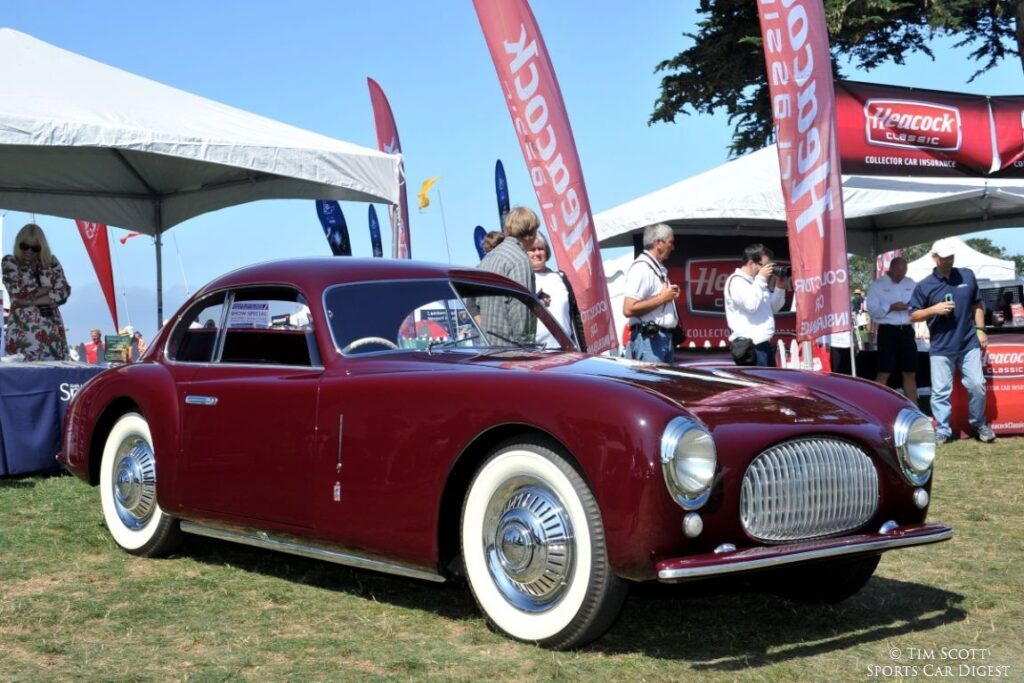
4. Giorgetto Giugiaro: The Prolific Master of the Wedge
If you’ve driven a European car from the 1970s or 80s, chances are you’ve experienced the design genius of Giorgetto Giugiaro. Born in 1938, Giugiaro is arguably the most prolific car designer of all time, having penned over 200 production cars and countless concept vehicles throughout his illustrious career. He founded Italdesign Giugiaro in 1968, transforming it into one of the most influential design houses in the world.
The “Folded Paper” Style
Giugiaro’s signature style, often dubbed the “folded paper” or “wedge” design, emerged as a dominant force in the 1970s. Characterized by sharp creases, flat surfaces, and geometric precision, this aesthetic was a stark departure from the rounded forms that preceded it. It was a functional approach, aiming for maximum interior space within compact footprints and improved aerodynamics. His designs were often minimalist, clean, and highly efficient.
Global Reach and Iconic Designs
Giugiaro’s influence stretched across continents and car segments. He designed cars for Volkswagen, Fiat, Alfa Romeo, Lancia, BMW, Maserati, Lotus, and even Daewoo. His knack for creating universally appealing yet distinctive designs made him highly sought after.
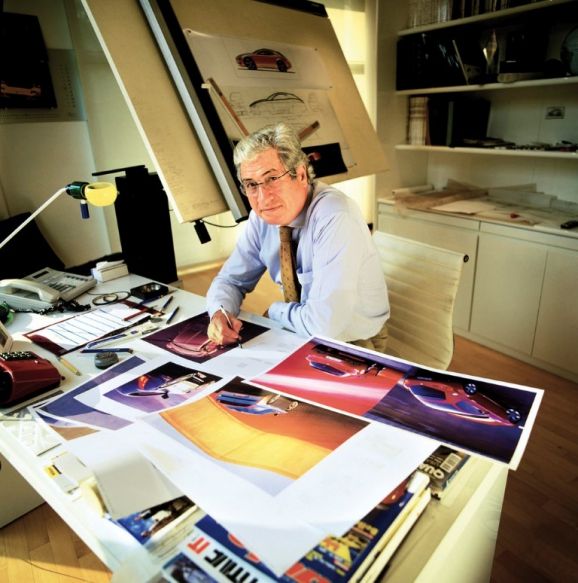
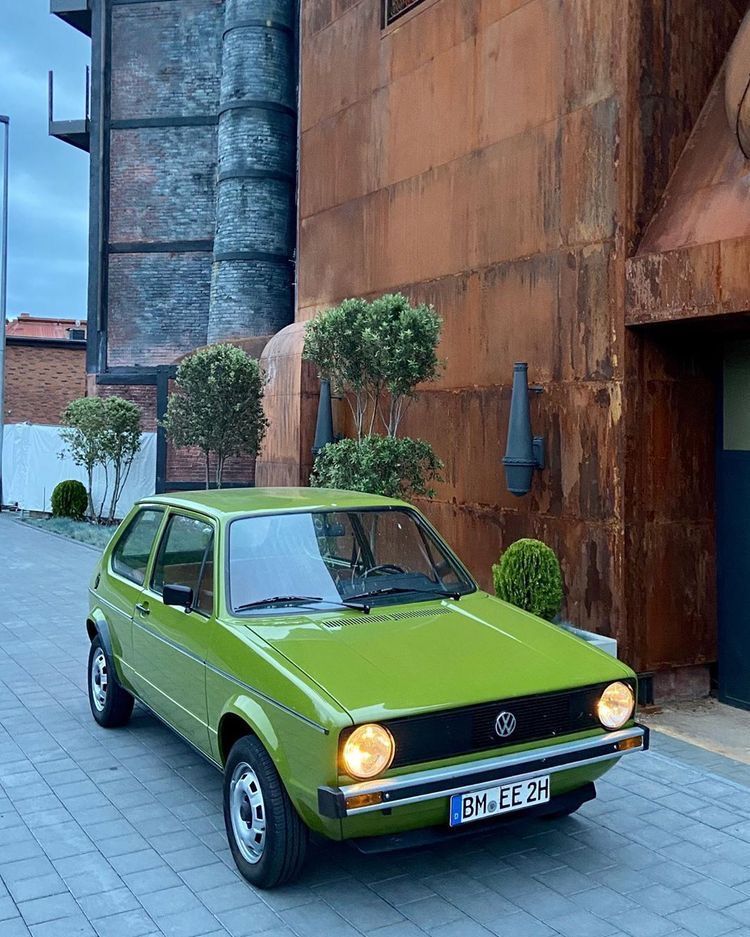
Some of his most famous creations include:
- Volkswagen Golf Mk1 (1974): This car revolutionized the compact segment. Its crisp, clean lines, practical hatchback design, and efficient use of space made it an instant hit and defined a generation of small cars.
- Lotus Esprit (1976): A stunning example of his wedge philosophy, turning heads as a Bond car.
- DeLorean DMC-12 (1981): That unmistakable stainless steel, gull-winged icon from “Back to the Future.”
- Fiat Uno (1983): Another hugely successful compact car that showcased his functional yet stylish approach.
Giugiaro demonstrated an incredible ability to adapt his style to different brand identities while maintaining his signature clarity and logic. His designs were often understated yet instantly recognizable, proving that good design doesn’t always need to shout.
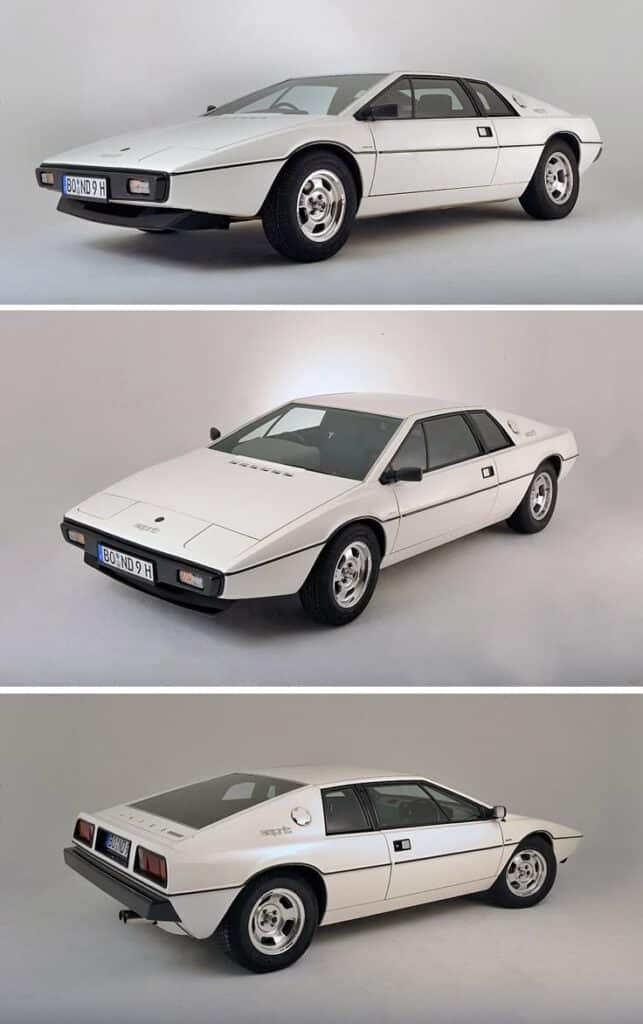
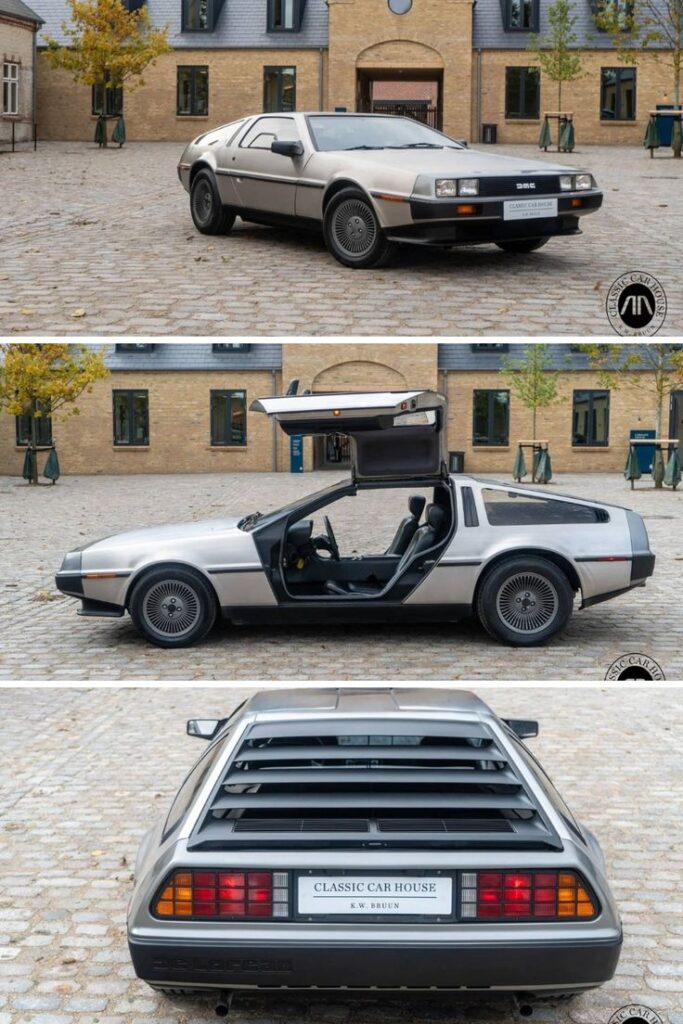
Master of Utility and Aesthetics
Giugiaro’s genius lay in his ability to combine aesthetic appeal with unparalleled functionality and mass appeal. He understood the nuances of manufacturing and packaging, ensuring his designs were not only beautiful but also practical and buildable. His prolific output and consistent quality earned him the title “Car Designer of the Century” in 1999. His legacy is one of making modern, sensible design beautiful and accessible to millions.
5. Marcello Gandini: The Visionary of Angular Revolution
While Giorgetto Giugiaro was perfecting the accessible wedge, another Italian maestro, Marcello Gandini, was pushing the boundaries of radical, futuristic design, largely through his work at the Bertone design house. Born in 1938, Gandini joined Bertone in 1965 as chief designer, succeeding Giugiaro, and quickly made his mark by creating some of the most dramatic and unforgettable supercars of the 20th century.
The Extreme Wedge
Gandini took the “wedge” concept to exhilarating new heights. His designs were sharper, more aggressive, and often incorporated innovative features like scissor doors. He wasn’t afraid to challenge conventional aesthetics, crafting cars that looked like they belonged on another planet. His philosophy embraced the dramatic, the provocative, and the absolutely unforgettable.
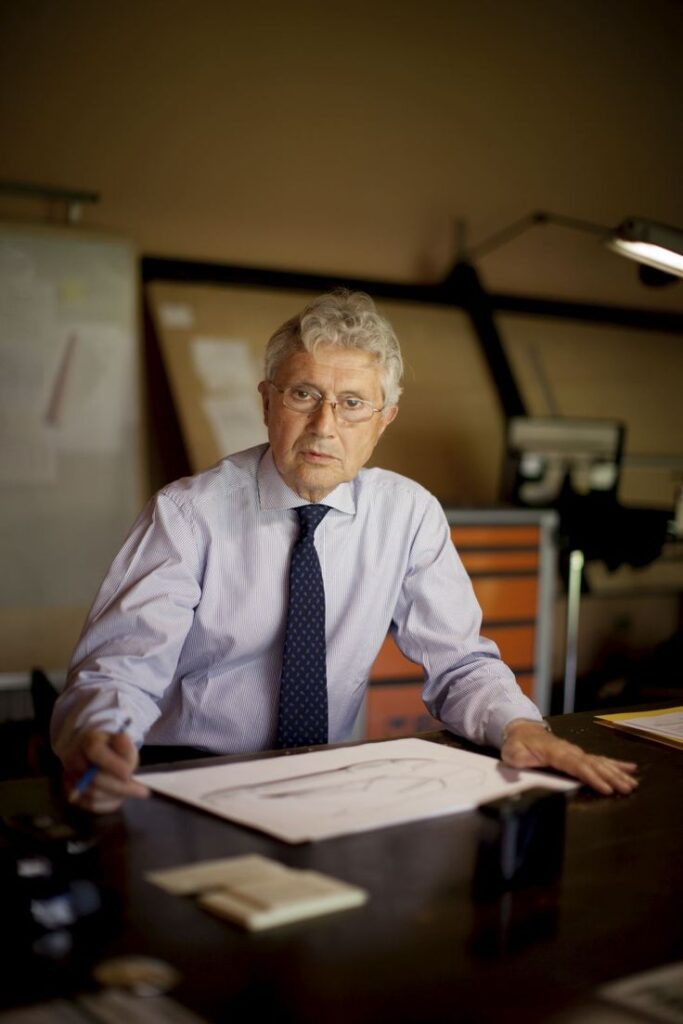

Lamborghini’s Wild Heart
Gandini’s most celebrated work is undoubtedly his contribution to Lamborghini. He was the force behind many of the brand’s most iconic and audacious models:
- Lamborghini Miura (1966): While the original concept might have been Giotto Bizzarrini’s, Gandini’s sleek, low-slung body, with its revolutionary mid-engine layout, was a revelation. It literally invented the supercar as we know it, with its breathtaking proportions and elegant yet aggressive stance.
- Lamborghini Countach (1974): This was Gandini’s ultimate expression of the extreme wedge. With its razor-sharp angles, massive rear wing (initially a later addition, though often associated with it), and iconic scissor doors, the Countach was a poster car for an entire generation. It looked like nothing else on the road and set a new standard for automotive extremism.
- Lancia Stratos Zero (Concept, 1970) and Stratos (Production, 1973): The Zero concept was a literal wedge, so low you almost stepped over it to get in. The production Stratos, though less extreme, was a rally legend with its compact, purpose-built body.
- Alfa Romeo Carabo (Concept, 1968): Another extreme wedge concept that pioneered flush glass and a distinct lack of traditional curves.
Gandini’s work was characterized by its daring originality and uncompromising vision. He didn’t follow trends; he set them, creating cars that continue to inspire awe and excitement decades later.

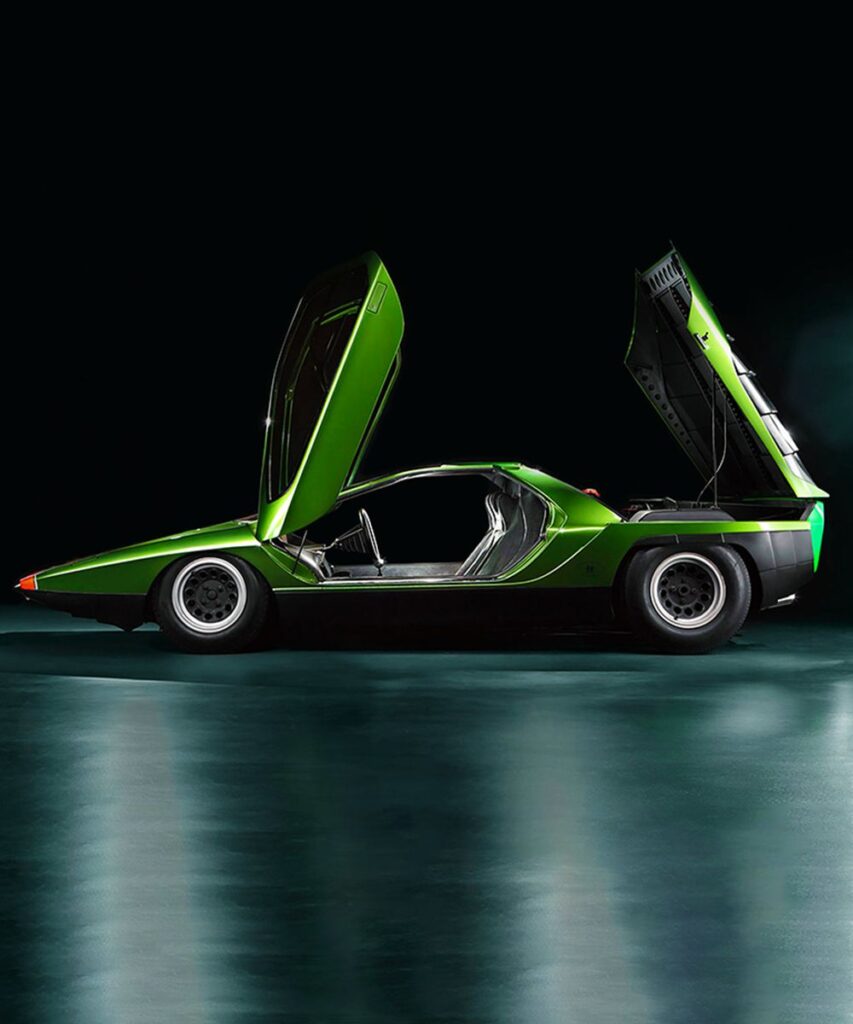
A Legacy of Boldness
Marcello Gandini’s designs were often controversial at first glance, but their sheer audacity and futuristic appeal ensured their legendary status. He proved that cars could be more than just transportation; they could be outrageous statements, symbols of speed, power, and unbridled imagination. His influence is seen in countless modern supercars that still strive to capture some of the theatricality and edge that Gandini so masterfully introduced.
6. Chris Bangle: The Provocateur of Modern Design
Few designers have stirred as much debate and strong opinion as Chris Bangle. As the head of design for BMW from 1992 to 2009, he ushered in an era of radical change that initially polarized critics and enthusiasts but ultimately redefined the brand’s aesthetic and influenced global automotive design. Born in 1956, this American designer broke away from BMW’s traditionally conservative styling, leading a revolution often called “Bangle-butt” or “flame surfacing.”


Challenging the Status Quo
Before Bangle, BMW design was evolutionary, characterized by clean lines and predictable progressions. Bangle, however, believed that the brand needed a seismic shift to remain relevant and push design forward. He introduced a design language that was sculptural, complex, and deliberately provocative.
His most famous (or infamous) design characteristic was “flame surfacing,” a technique involving concave and convex surfaces that intersect and reflect light in unexpected ways, creating a sense of movement even when stationary. This approach led to dramatically different proportions and surface treatments than anything seen before on a BMW.
The “Bangle Butt” and Beyond
The first car to truly showcase Bangle’s new direction was the 2002 BMW 7 Series (E65). Its controversial trunk lid, nicknamed the “Bangle butt,” instantly divided opinion. Critics decried it as awkward and ugly, while supporters praised its boldness and originality. But the changes didn’t stop there. He oversaw the design of the 2003 Z4, with its dramatic Z-line and sharp creases, and the 2003 5 Series (E60), which also featured flame surfacing and a more aggressive stance.
Bangle’s designs were challenging because they forced people to rethink what a BMW should look like. They were not universally loved, but they were undeniably distinctive and undeniably modern. They broke BMW free from its own design conventions and set a new trajectory for the brand.


A Legacy of Disruption
While the initial reception was mixed, the long-term impact of Bangle’s era at BMW is undeniable. His designs paved the way for more expressive and sculptural forms across the industry. Many of his once-controversial elements eventually became mainstream, demonstrating that he was ahead of his time. He proved that sometimes, to innovate, you have to be willing to disrupt and take risks, even if it means weathering a storm of criticism. His approach showed that design isn’t always about pleasing everyone; sometimes it’s about pushing the boundaries of taste and expectation. He also made the brand highly successful, demonstrating that good design, even controversial, can drive sales.
7. Ian Callum: The Modern Classicist
In the realm of contemporary automotive design, few have managed to blend classic elegance with modern dynamism as successfully as Ian Callum. Born in 1954 in Scotland, Callum served as Director of Design for Jaguar from 1999 to 2019, where he was instrumental in revitalizing the brand’s image, pulling it from retro pastiches into a sleek, forward-looking future.
Evolving British Luxury
Before Jaguar, Callum honed his skills at Ford, Ghia, and most notably, Aston Martin, where he penned the exquisite DB7 and the V12 Vanquish. His work on these cars showcased his innate ability to craft powerful, elegant forms that felt both timeless and utterly contemporary.
When he arrived at Jaguar, the brand was largely relying on nostalgic designs that echoed its glorious past. Callum recognized the need for change, famously stating, “Jaguars should look like no other cars.” He embarked on a mission to redefine Jaguar’s identity, ditching the “retro” look for a design language that was progressive, muscular, and distinctly modern British luxury.
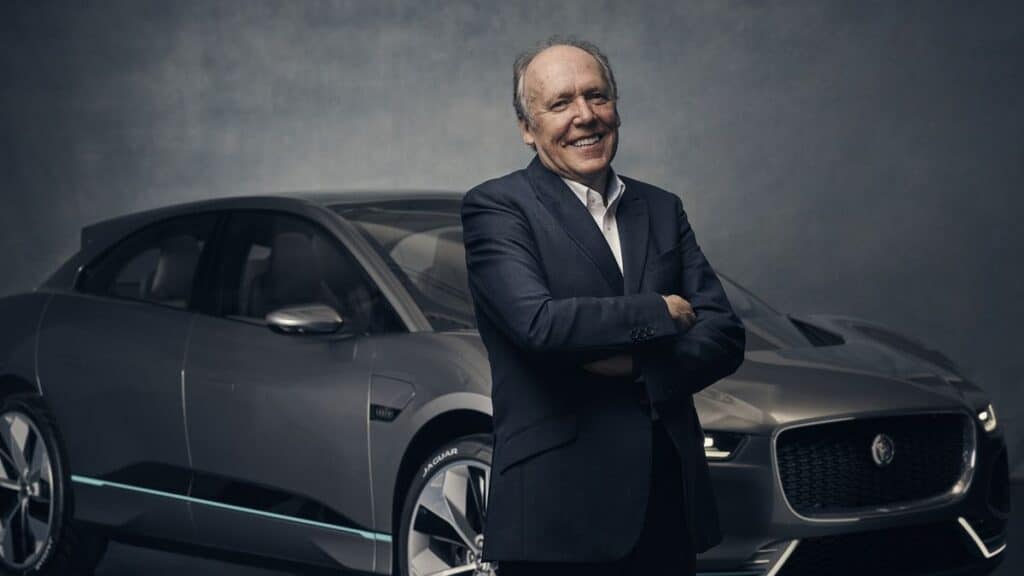

The Rebirth of Jaguar
Callum’s tenure at Jaguar resulted in a string of critically acclaimed and commercially successful models that reshaped public perception of the brand:
- Jaguar XF (2007): This car marked the turning point. Its clean, athletic lines, strong stance, and modern interior were a radical departure from its predecessor and signaled a new direction for Jaguar.
- Jaguar XJ (2009): A bold, futuristic interpretation of the brand’s flagship sedan, challenging traditional luxury car aesthetics.
- Jaguar F-Type (2013): A spiritual successor to the legendary E-Type, the F-Type was a stunning sports car that perfectly embodied Callum’s philosophy of modern elegance and raw power. Its proportions, surfacing, and detailing were universally praised.
- Jaguar F-Pace (2015): Jaguar’s first-ever SUV, demonstrating Callum’s ability to adapt the brand’s design language to new segments while retaining its essence.
Callum’s designs are characterized by their strong lines, muscular haunches, and a meticulous attention to detail that elevates every surface. He consistently achieved a balance between aggression and sophistication, creating cars that look both fast and luxurious.
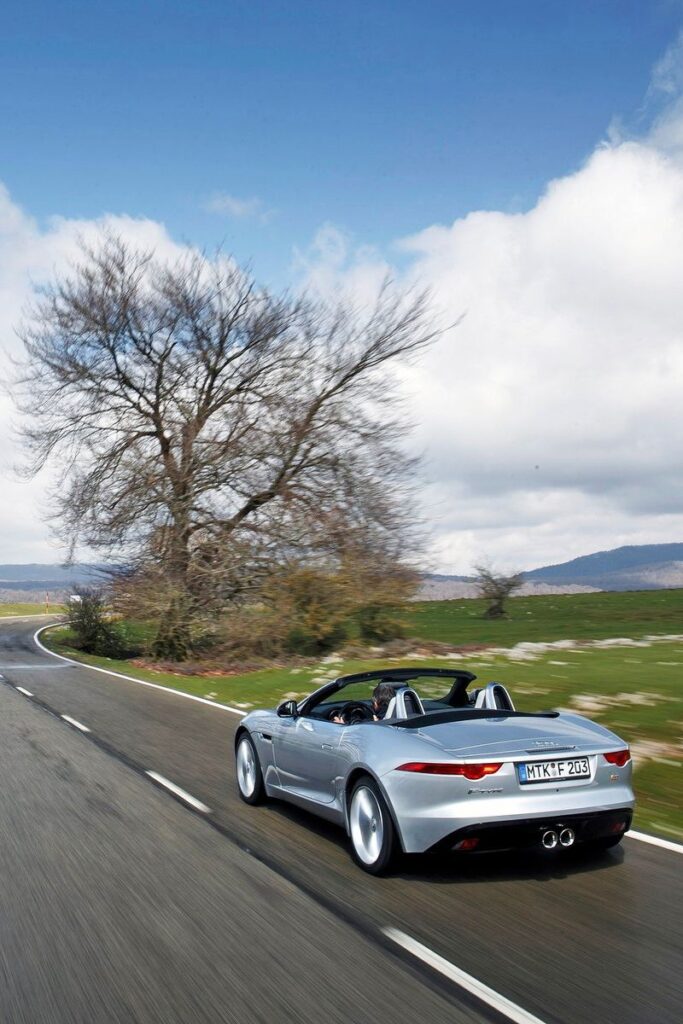
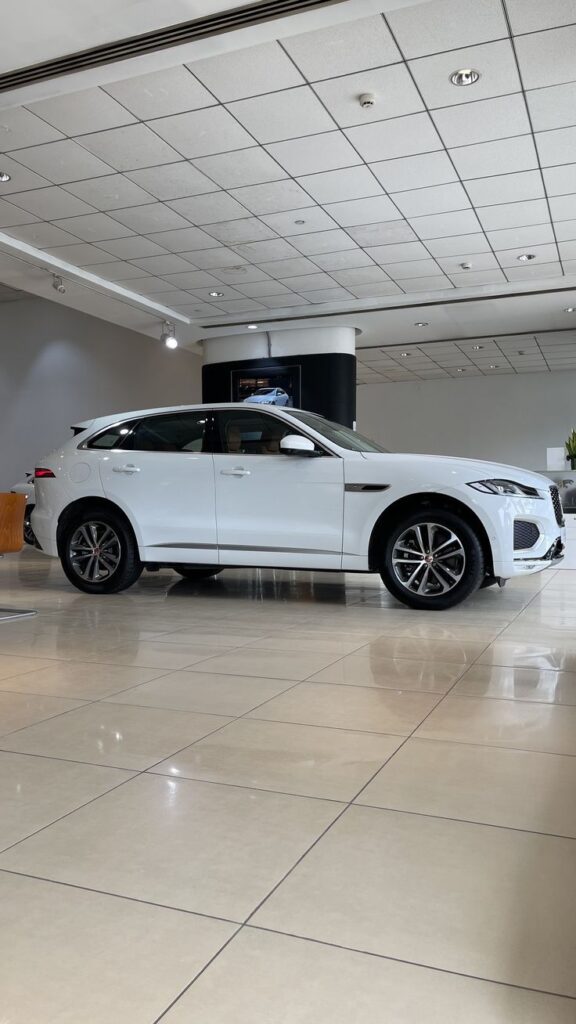
A Legacy of Reinvention
Ian Callum’s influence extended beyond individual cars; he revitalized an entire brand and proved that heritage doesn’t have to mean stagnation. He showed that it’s possible to respect a brand’s past while fearlessly embracing the future. His work at Jaguar stands as a testament to the power of cohesive, visionary design in transforming a brand’s fortunes and setting new benchmarks for automotive beauty. His commitment to design excellence also highlights the critical need for robust support systems, whether it’s through careful craftsmanship or practical considerations such as ensuring reliable roadside repair services for these finely tuned machines.
These seven designers, each with their unique vision and unwavering commitment, have left an indelible mark on the automotive world. They’ve given us shapes that evoke emotion, define eras, and push the boundaries of what’s possible. From Ferdinand Porsche’s functional elegance to Ian Callum’s modern classicism, their work reminds us that every car has a story, a vision born in the mind of a true artist.
So, the next time you admire a beautiful car, take a moment to appreciate the designer behind the wheel, the individual who dared to dream those lines, curves, and angles into existence. They are the true architects of our automotive passion. Their legacy drives on, shaping not just the vehicles we drive, but the very aesthetic landscape of our world. What car design most captures your imagination? Which designer’s vision resonates most with your own sense of style? The conversation around design is as endless and exciting as the open road itself.
- 31shares
- Facebook0
- Pinterest31
- Twitter0


